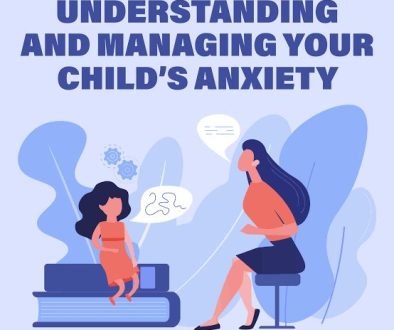Dysthymia: Persistent Depressive Disorder (PDD)
Dysthymia, also known as Persistent Depressive Disorder (PDD), is a chronic form of depression characterized by a long-term, low-grade depressive mood that persists for at least two years in adults (or one year in children and adolescents). Unlike major depressive disorder, where symptoms are intense but episodic, dysthymia presents as a continuous low-level depression that can affect an individual’s day-to-day functioning, self-esteem, and overall quality of life. Individuals with dysthymia may experience fewer symptoms than those with major depression, but the extended duration of these symptoms can significantly impact their ability to lead a fulfilling life.
Understanding Dysthymia (Persistent Depressive Disorder)
Dysthymia is often described as a more subtle, “background” form of depression that might not be as easily recognizable as major depression but can be just as debilitating over time. People with dysthymia often experience persistent feelings of sadness or hopelessness, but they may continue with daily responsibilities, leading some to dismiss or downplay the severity of their symptoms. This can make it difficult to seek or receive support, contributing to feelings of isolation and frustration.
The chronic nature of dysthymia often leads to a phenomenon called “double depression,” where individuals with PDD experience episodes of major depressive disorder on top of their persistent symptoms. These episodes can worsen symptoms, complicating recovery and treatment.
Symptoms of Dysthymia
Symptoms of dysthymia are similar to those of major depressive disorder but are generally milder and more persistent. Common symptoms include:
• Persistent feelings of sadness or hopelessness
• Low self-esteem or feelings of inadequacy
• Difficulty concentrating or making decisions
• Fatigue or low energy
• Changes in appetite, either overeating or loss of appetite
• Insomnia or hypersomnia (excessive sleeping)
• Difficulty finding enjoyment or interest in activities (anhedonia)
•Social withdrawal and a sense of detachment from others
These symptoms must be present for most of the day, more days than not, for at least two years in adults or one year in children and adolescents to receive a diagnosis of dysthymia.
Diagnosis of Dysthymia
Diagnosing dysthymia requires a comprehensive assessment by a mental health professional. Due to its persistent and less intense symptoms, dysthymia is often underdiagnosed or mistaken for personality traits, such as pessimism or shyness. To diagnose PDD, a mental health provider will look for a long-term pattern of low-grade depressive symptoms that impact daily life but do not meet the criteria for major depressive disorder.
Diagnosis involves a clinical interview to explore symptoms, medical history, family history of mood disorders, and any possible external stressors or medical conditions that may influence mood. Self-report questionnaires and mood-tracking tools may also be used to understand the severity and duration of symptoms.
Causes and Risk Factors
The exact causes of dysthymia are not well understood, but a combination of genetic, biological, and environmental factors is believed to contribute to its development.
• Genetics: Individuals with a family history of depressive disorders may have a higher risk of developing dysthymia, indicating a genetic component.
• Brain chemistry: Imbalances in brain neurotransmitters, such as serotonin, dopamine, and norepinephrine, are thought to play a role in mood regulation. Low levels of these chemicals may contribute to persistent feelings of sadness or lethargy.
• Environmental factors: Chronic stress, trauma, abuse, or significant life changes (such as the loss of a loved one) may increase the risk of developing dysthymia. Additionally, early childhood adversity or neglect can contribute to long-term depressive symptoms.
• Personality traits: Certain personality traits, such as high levels of self-criticism, pessimism, or a tendency to worry, may increase vulnerability to developing persistent depressive disorder.
Treatment and Management of Dysthymia
Effective treatments for dysthymia can help individuals manage symptoms and improve their quality of life, even though the chronic nature of the disorder can make it challenging to treat. Common treatment options include:
• Psychotherapy: Cognitive-behavioral therapy (CBT) is particularly effective for dysthymia, helping individuals challenge negative thought patterns, improve self-esteem, and develop coping strategies for managing symptoms. Other therapeutic approaches, such as interpersonal therapy, can help address relationship issues and improve social support.
• Medication: Antidepressants, such as selective serotonin reuptake inhibitors (SSRIs), are commonly prescribed for dysthymia. These medications can help balance neurotransmitter levels and reduce symptoms, though they may take several weeks to show improvement. Mood stabilizers or other medications may be considered in cases where antidepressants alone are not effective.
• Lifestyle changes: Regular exercise, a balanced diet, adequate sleep, and stress management techniques can positively impact mood and overall mental health. Physical activity, in particular, has been shown to boost endorphins, improve energy, and reduce depressive symptoms.
• Support groups and social support: Connecting with others who experience similar challenges can reduce feelings of isolation and provide a sense of community. Support groups, whether in-person or online, offer a safe space to share experiences and gain support.
Living with Dysthymia
Dysthymia can impact many areas of life, including work, relationships, and self-esteem. The constant, low-grade depressive symptoms can make it difficult to maintain motivation, stay engaged in activities, or feel a sense of satisfaction or purpose. Additionally, individuals with dysthymia often struggle with self-criticism, feeling as though they are “never good enough,” which can perpetuate feelings of low self-worth.
Despite these challenges, people with dysthymia can manage their symptoms and live fulfilling lives. Establishing a supportive routine, maintaining regular mental health check-ins, and engaging in self-care activities are essential. Building a strong support system, whether through friends, family, or mental health professionals, can also provide comfort and reduce feelings of isolation.
Conclusion
Dysthymia, or Persistent Depressive Disorder, is a long-term mood disorder that can significantly impact daily functioning and quality of life. Although it may be less intense than major depression, the chronic nature of dysthymia requires a comprehensive approach to treatment and management. With a combination of therapy, medication, lifestyle changes, and social support, individuals with dysthymia can manage symptoms, enhance their well-being, and find meaning and stability in their lives. Early recognition and treatment can make a significant difference in improving outcomes for those affected by this chronic depressive disorder.



